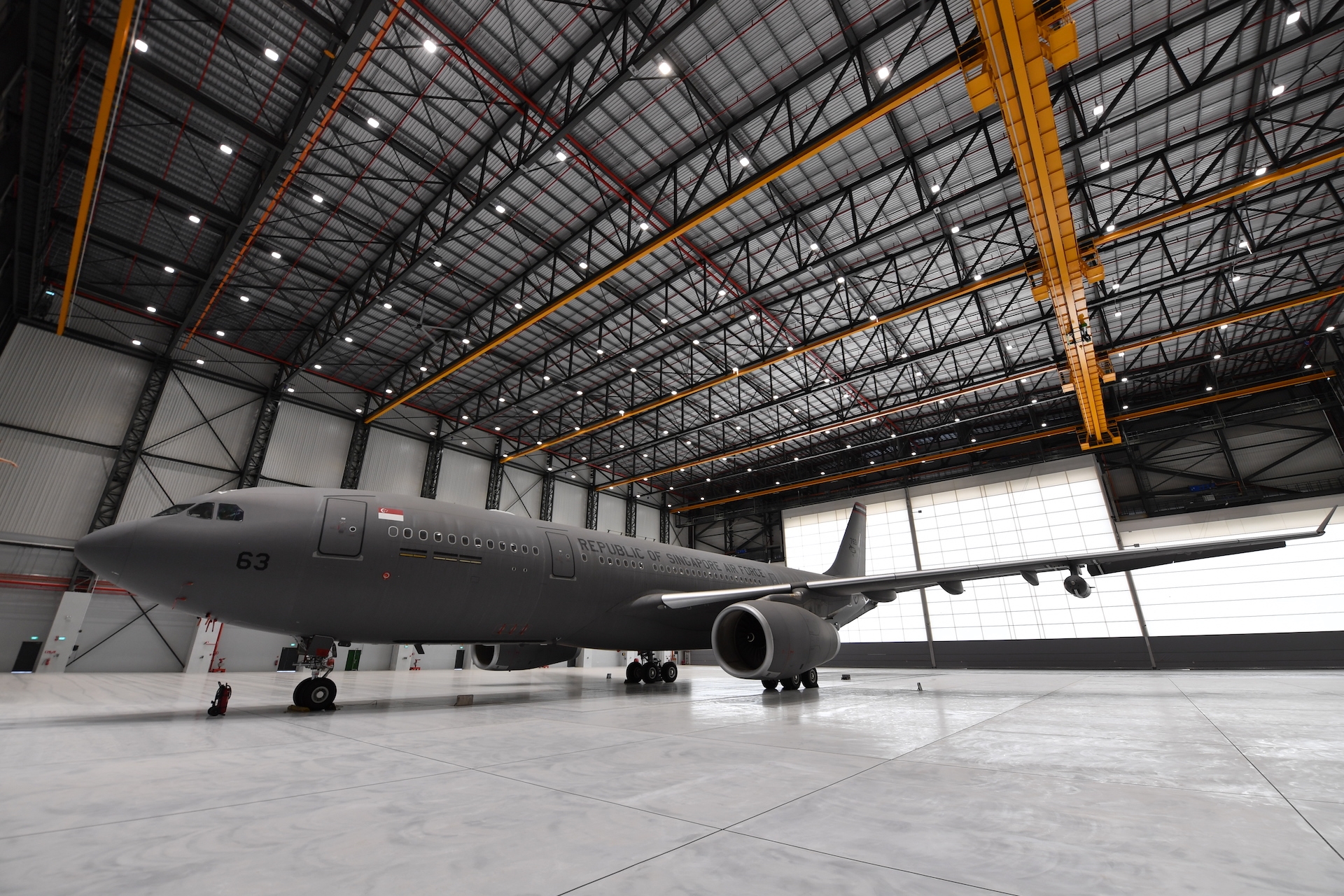ENERGY-EFFICIENT BUILDINGS, HYBRID VEHICLES AMONG SAF'S GREEN INITIATIVES
//Story by THRINA THAM //Photos by CHAI SIAN LIANG & PIONEER PHOTOGRAPHERS
The Singapore Armed Forces (SAF) will complete its first net positive energy building later this month. It will also reduce its carbon emissions by 11,400 tonnes by 2021, and replace its 400 administrative vehicles with hybrid cars by 2023.
These were some of the green initiatives announced by Minister of Defence Dr Ng Eng Hen during his Committee of Supply debate speech on the defence budget on 2 Mar.
They are part of the ministry's contributions to nation-wide efforts against climate change, said Dr Ng.
SAF's green buildings
The SAF's first net positive energy building – the A330 Multi-Role Tanker Transport (MRTT) hangar – was designed with the help of the Defence Science and Technology Agency (DSTA). It can generate 30 per cent more electricity than consumed.
For example, solar panels installed on its roof will generate 1,225 MWh of electricity a year. The additional energy will be directed to other facilities within Changi Air Base (East), where the hangar is located.
SAF's green buildings
The SAF's first net positive energy building – the A330 Multi-Role Tanker Transport (MRTT) hangar – was designed with the help of the Defence Science and Technology Agency (DSTA). It can generate 30 per cent more electricity than consumed.
For example, solar panels installed on its roof will generate 1,225 MWh of electricity a year. The additional energy will be directed to other facilities within Changi Air Base (East), where the hangar is located.
"The green features also value-add to our operations," said Military Expert 6 (ME6) Teo Keng Siang, Head of Infrastructure and Systems Branch, Air Plans Department.
"For instance, the building design allows for natural ventilation, which leads to a cooling working environment for our maintenance crew," he explained.
This is achieved by large-span louvres, at the entrance and at the back of the building, to optimise airflow.
This has the additional benefit of avoiding costs incurred by installing additional fans and air conditioning to cool the premises, noted Mr Soh Tian Boon, Senior Programme Manager at DSTA's Building and Infrastructure Programme Centre.
"Other cost savings features include a rainwater harvesting system (for irrigation and flushing of toilets) and energy-efficient LED lightings," added Mr Soh.
The MRTT hangar joins other energy-efficient buildings throughout SAF camps.
"MINDEF has commissioned net zero energy buildings at Kranji and Seletar camps," said Dr Ng. He added that the buildings in 12 SAF camps will be equipped with solar panels by Financial Year 2020, which ends in March 2021.
Combined, these energy-efficient buildings in camps and bases will reduce carbon dioxide emissions by 11,400 tonnes by the end of March 2021, while energy savings from the solar-powered buildings are expected to save $1.6m annually.
Reducing carbon & managing waste
The SAF will also replace its fleet of 400 administrative vehicles with hybrid models by 2023, which will reduce carbon emissions by up to two-thirds per vehicle.
The SAF will work on moving towards electric vehicles when the island’s supporting infrastructure is built, said Dr Ng.
The SAF is also looking to expand its food waste management system to 10 more cookhouses, bringing its total to 18.
Under the scheme, food waste collected from the cookhouses is brought to recycling plants – there, it is processed to produce biogas which is eventually used to generate energy.
Dr Ng also announced that the Navy is exploring the use of hybrid propulsion systems in its new vessels.
"Adapting to use 'green' technologies could also reap operational advantages… Such technologies enable our new ships to not only reduce carbon emissions, but become more energy-efficient."










